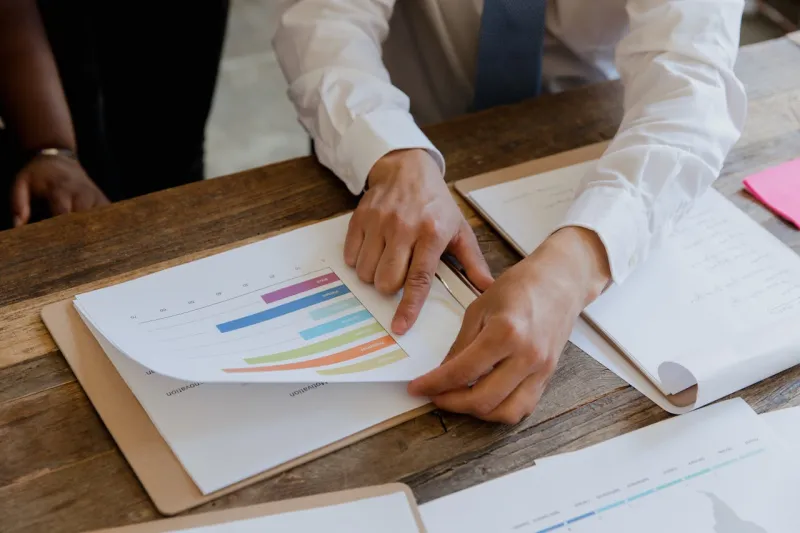In today’s data-driven world, the success of any organization or business largely depends on harnessing and utilizing the power of data. Data can be fundamentally used to make future decisions that ultimately benefit the organization or entity concerned. Two terms that are often used interchangeably in this regard are data gathering and data analysis. While they sound alike but they represent the distinct stages in the data’s lifecycle.
In this article, we’ll delve into the differences between data analysis and data gathering, explore their unique roles and highlight their significance in unlocking valuable insights and how mastering these two stages can enable us to make beneficial decisions, resultantly enabling us to gain a competitive edge in this digital landscape.
Data Gathering Vs Data Analysis – What’s the Difference?
Data gathering involves collecting accurate and relevant data using suitable methods and ensuring data quality. On the other hand, data analysis transforms raw data into valuable insights, enabling informed decision-making. Understanding these differences is crucial for leveraging the power of data.
Mastering both stages and utilizing appropriate tools empowers businesses in the digital landscape. Effective data gathering provides reliable data, while data analysis extracts insights for strategic actions. The interdependence between data gathering and analysis creates a feedback loop for continuous improvement. Incorporating external data sources broadens perspectives. Together, these stages uncover opportunities, identify trends, and adapt to customer needs.
We’ll learn more about the interdependence of data gathering and data analysis later in the article. First, let’s fully understand both terms, along with the tools & technologies involved in them.
Defining Data Gathering
Data Gathering or Data Collection can be defined as the process of gathering and measuring the data on target variables from various sources and establishing a system to ensure the gathered data’s accuracy using a thoroughly established system. This system is used to evaluate outcomes by answering relevant questions.
Data Gathering involves multiple stages such as,
- Identifying data requirements
- Selecting appropriate sources
- Designing suitable data collection methods
- Ensuring the accuracy and reliability of the collected data
Data Gathering – Methods and Techniques
Gathering insightful data leads to beneficial results and to ensure this, suitable methods and techniques should be utilized. Selecting any data-gathering method largely depends on the nature of the data and the end objective. Let’s explore a few examples.
- Web Scraping: With the increasing number of data being available online, this technique, web scraping allows automatic extraction of beneficial information from websites. This is widely used by E-commerce companies to scrape product data from competitor websites to analyze future product range and pricing strategies.
- Surveys and Questionnaires: The most generic and widely used method of data gathering is by holding surveys i.e., survey forms to gather structured data from a target group of individuals. This was once in the form of hard copies being handed out and then collected but with the advent of technology, google forms and other online forms are now used. For example, healthcare providers use feedback forms to conduct patient satisfaction surveys to gather feedback on their services.
- Observations and Field Studies: This method is more commonly used by researchers and is usually carried out by engaging in direct observations or field studies to gain more qualitative data.
- Sensor Data Collection: In respective fields where data need to be collected and monitored in real-time, sensors are used to collect data comprising various parameters such as temperature, pressure, and vibrations.
Data Gathering – Data Quality and Governance
Ensuring quality data is a crucial aspect of data gathering. The quality of the gathered data can determine the accuracy of results in the end. Some important points to keep in mind while ensuring quality data gathering are,
- Completeness: The collected data must contain all the required variables and aspects needed regarding being used for the required research or equation. The gathered data should be complete and should be free of any missing values.
- Accuracy: The data being gathered should be robust and accurate. Errors in the data entry or incorrectly collected data may become a hindrance and may result in misleading analysis or flawed conclusions.
- Consistency: Data consistency means that If data is being collected from multiple sources, it should be uniform. Errors may arise from incompatible sources or different data sources which may ultimately lead to compromising the reliability of the analysis.
Handling data can be susceptible, so data governance practices such as data privacy and appropriate security measures should be well considered and well implemented at all times.
Data Analysis- Extracting Insights and Value
When the step of data collection is completed and raw data is collected consisting of multiple required parameters and variables, the collected raw data is converted into meaningful information which leads to uncovering certain patterns in the data, identifying relationships between the variables, and trends extracting valuable insights. This process of converting raw data into useful information can be termed Data Analysis.
In this stage, various techniques come into play, such as algorithms and statistical methods like linear regression. These tools enable analysts to dig deep into the data, unraveling its secrets and extracting valuable nuggets of information. By applying statistical models and algorithms, analysts can uncover hidden trends, make data-driven predictions, and gain a deeper understanding of the underlying patterns within the data.
Data Analysis – Types
Data Analysis can be sorted into various types whose use depends on the situation or the certain type of data at hand. Some of the common types of data analysis are:
- Descriptive Analysis: This type of analysis provides a comprehensive overview of the data by summarizing key aspects, parameters, and trends. It paints a clear picture of what the data is telling us and helps in understanding the current state of affairs.
- Exploratory Analysis: In exploratory analysis, the focus is on discovering previously unnoticed patterns and trends within the data. By visualizing the data, detecting anomalies, and using techniques like cluster analysis, analysts uncover hidden gems of information that can lead to new insights and opportunities.
- Inferential Analysis: This type of analysis involves drawing calculated predictions and making informed judgments based on the collected information. It allows analysts to generalize findings from a sample to a larger population, using statistical methods such as hypothesis testing to draw meaningful conclusions.
- Predictive Analysis: Predictive analysis utilizes historical data patterns to forecast future outcomes. Employing statistical techniques and machine learning models, such as series analysis, neural networks, or decision trees can make predictions and projections that aid in decision-making and strategic planning.
By employing these diverse types of data analysis, organizations can unlock the full potential of their data. Each type offers a unique perspective and serves specific purposes in uncovering insights, informing decisions, and guiding future actions.
Data Analysis- Tools and Technologies
Employing Data Analysis requires the use of multiple tools, software, and programming languages. Some of them are:
- Spreadsheets: Spreadsheets like Microsoft Excel and Google Sheets are one of the first tools that analysts start using. These user-friendly software provide a solid foundation, offering most of the fundamental data analysis capabilities such as sorting, filtering, and making pivot tables/calculations.
- Statistical Software: Dedicated statistical software such as SAS (Statistical Analysis Software), and SPSS (Statistical Package for the Social Sciences) offers a wide range of advanced statistical techniques and modeling capabilities. These tools help analysts conduct advanced-level analyses and derive robust conclusions from data.
- Programming Languages: Programming Languages like R and Python provide extensive libraries that are frequently used by data analysts/scientists for data analysis and machine learning. These languages provide a versatile toolkit, allowing analysts to perform complex calculations, implement advanced algorithms, and do pretty much everything possible with the data.
- Data Visualization Platforms: Last but not least, tools like Tableau, Power BI, or matplotlib in Python enable the creation of interactive and visually appealing data visualizations, bringing the data and insights to life, and facilitating better comprehension by both technical as well as non-technical personnel.
-

What is the difference between Data Gathering and Data Analysis?
-

What are the Data Collection Tools and How to Use Them?
-

Statistical Data Analysis in Research
The Interdependence of Data Gathering and Data Analysis
As we learned earlier, data analysis and data gathering are interdependent processes in the data lifecycle. Some key components explaining their interdependence are:
- Feedback Loop
Data Gathering and Data Analysis are interconnected processes that lead to the creation of a feedback loop. Once data is analyzed, insights can be gained from it and then quite the refinements can be made to the data gathering step to further improve it.
For example, when an initial analysis is conducted of customer feedback, it can be understood what more points need to be added to the data-gathering step to further understand and amplify the feedback of customers. Ultimately prompting the organization or entity to improve the data-gathering methods.
- Continuous Improvement
The feedback loop enables continuous improvement in the data lifecycle which better helps to understand the problem at hand and leads to an improved analysis. New insights generated enable the organization to further refine their data gathering and data analysis process, resultantly leading to beneficial outcomes for the organization.
- External Data Sources
Data gathering involves the collection of just the primary data while data analysis also leads to the use of external sources that affect the outcome of an analysis.
For instance, in the customer feedback form in a restaurant, primary data such as quality of food, and ambiance would gain insights that would be beneficial to some extent but considerations from data analysis can lead to further external sources being identified such as inflation or economic integrity of the country that led to the bad reviews of customers regard to increased prices of the dishes.
Conclusion
Data Gathering and Data Analysis are vital stages in the data lifecycle, each with distinct roles. While the terms refer to a completely different set of techniques, many tend to confuse them in daily life. Nevertheless, as we’ve seen throughout the article, both are highly correlated and are a part of the same process from a black-box perspective.
It’s important to recognize the interdependence of these stages. They work together like puzzle pieces, forming a cohesive process that drives achievement, progress, and informed decision-making. By embracing both Data Gathering and Data Analysis, organizations can tap into the full potential of their data resources.
Lastly, here’s a take-home table to help you remember the key differences between both techniques:
| Aspect | Data Gathering | Data Analysis |
| Definition | Acquiring raw data from various sources | Transforming raw data into meaningful insights |
| Objective | Collecting and compiling data | Extracting patterns, trends, and insights |
| Methods | Surveys, observations, web scraping | Descriptive, inferential, predictive analysis |
| Importance | Foundation for analysis | Informed decision-making and strategic actions |
| Tools and Technologies | Surveys, observations, web scraping tools | Statistical software, programming languages, visualization platforms |
| Data Quality | Accuracy, completeness, consistency | Validating, cleaning, preparing data for analysis |
| Feedback Loop | Analysis guides data collection refinements | Insights refine and improve analysis |
| External Data Sources | Limited to Primary data sources | Incorporates external datasets for broader insights |
| Example | Customer surveys | Sales analysis and forecasting |

